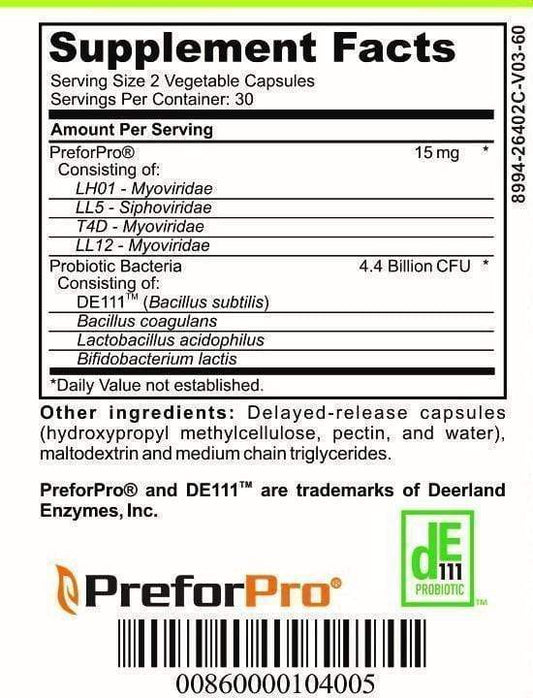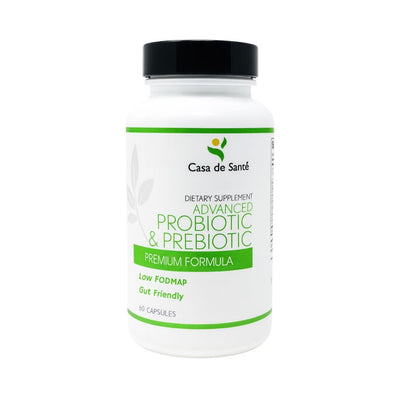Fermented Foods Like Kimchi
Fermented Foods Like Kimchi
Fermented foods have been consumed for centuries in various cultures across the world, and in recent times, have gained a lot of popularity in the Western world for their health benefits. Kimchi is one such fermented food that has gained a lot of popularity recently. In this article, we will discuss the different aspects related to fermented foods and kimchi in detail.
What are fermented foods?
Fermentation is a process where bacteria, yeasts or other microorganisms break down the carbohydrates present in foods like vegetables, fruits, dairy, or grains into simpler substances like lactic acid or alcohol. Fermented foods are the result of this process, and examples include kimchi, sauerkraut, kombucha, yogurt, kefir, and many more.
Fermented foods have been consumed by humans for thousands of years, and they are known for their unique flavors and health benefits. Fermentation can increase the nutritional value of foods, as well as improve their digestibility. For example, fermented dairy products like yogurt and kefir contain probiotics, which are beneficial bacteria that can improve gut health and boost the immune system.
There are many different types of fermented foods from around the world, each with their own distinct flavors and cultural significance. In Japan, for example, natto is a popular fermented soybean dish that is known for its strong smell and sticky texture. In Ethiopia, injera is a fermented flatbread that is a staple of the national cuisine. Fermented foods are a fascinating and delicious way to explore the diversity of global food cultures.
The history of fermentation
The process of fermentation has been used by different cultures for thousands of years, mainly as a method of preserving food. For example, early societies in China, Korea, and Japan developed the fermentation process primarily for preservation, but it also served as a flavour enhancement and a way of providing valuable nutrients to their diets.
As time went on, fermentation became more than just a preservation method. In the Middle Ages, beer brewing became a popular industry in Europe, and the process of fermentation was used to create alcoholic beverages. This led to the development of different types of beer, wine, and spirits, which are still enjoyed today.
In modern times, fermentation has expanded beyond just food and drink. It is now used in the production of pharmaceuticals, biofuels, and even textiles. The process of fermentation allows for the creation of valuable products in a sustainable and cost-effective way, making it an important aspect of many industries.
The science behind fermentation
During the fermentation process, microorganisms like bacteria or yeasts consume the carbohydrates in the food and convert them into acids or alcohol. These acids or alcohol, in turn, act as natural preservatives and increase the food's shelf life. Fermented foods are rich in probiotics, vitamins, minerals, and antioxidants, which make them a healthy addition to the diet.
Fermentation has been used for centuries as a way to preserve food and enhance its flavor. It is a natural process that does not require any artificial additives or preservatives. Fermented foods are also known to aid in digestion and boost the immune system, making them a popular choice for those looking to improve their overall health.
Some common examples of fermented foods include yogurt, kefir, sauerkraut, kimchi, and kombucha. Each of these foods has its unique set of microorganisms that contribute to the fermentation process and provide different health benefits. For example, yogurt and kefir are rich in probiotics, which help to maintain a healthy gut microbiome.
The health benefits of fermented foods
Fermented foods have many health benefits, including improved gut health, increased immune system function, and enhanced digestive health. The probiotics present in fermented foods help to maintain a healthy balance of bacteria in the gut and reduce inflammation, thereby bolstering overall health and wellbeing.
In addition to the benefits mentioned above, fermented foods have also been shown to improve mental health. Studies have found that consuming fermented foods can reduce symptoms of anxiety and depression, as well as improve cognitive function.
Furthermore, fermented foods are a great source of nutrients. They are rich in vitamins, minerals, and antioxidants, which can help to boost the immune system and protect against chronic diseases such as cancer and heart disease.
How to make your own kimchi at home
To make kimchi at home, first, chop up cabbage and mix it with salt in a large bowl. Allow it to sit for a few hours until the leaves become slightly wilted. Next, rinse the cabbage and mix it with other ingredients like scallions, garlic, ginger, and red pepper flakes. Pack the mixture into jars and let them ferment for a few days. Once the kimchi has fermented to your liking, enjoy either as a side dish or as a topping on your favourite dishes.
Kimchi is a traditional Korean dish that has been enjoyed for centuries. It is not only delicious but also has many health benefits. Kimchi is rich in vitamins, minerals, and probiotics that help to boost the immune system and aid in digestion. Additionally, it is low in calories and high in fiber, making it a great addition to any diet.
There are many variations of kimchi, and you can experiment with different ingredients to find the perfect recipe for your taste buds. Some popular additions include carrots, radishes, fish sauce, and sesame oil. You can also adjust the level of spiciness by adding more or less red pepper flakes.
The different types of kimchi and their origins
Kimchi is a Korean dish that has many variations based on the ingredients used and the region it's made in. Some popular types of kimchi include baechu kimchi (the most common type made with napa cabbage), gatkimchi (made with mustard greens), and kkakdugi (made with cubed radishes). Each type of kimchi has its own unique flavour and texture, and they're all delicious in their own way.
Another popular type of kimchi is chonggak kimchi, which is made with small, whole radishes. This type of kimchi is known for its crunchy texture and slightly sweet and sour taste. It's often served as a side dish with rice or used as a topping for Korean-style tacos.
Kimchi has a long history in Korean cuisine, dating back to the Three Kingdoms period (57 BC – 668 AD). Originally, kimchi was made with only salted vegetables, but over time, other ingredients such as garlic, ginger, and chili peppers were added to create the flavourful dish we know today. Kimchi is not only a staple in Korean cuisine, but it's also become popular around the world for its unique taste and health benefits.
How to incorporate kimchi into your diet
There are many ways to incorporate kimchi into your diet. You can serve it as a side dish with Korean BBQ or rice, add it to your sandwich or wrap, or top your salads or noodles with it. Some people even use it as a topping on pizza or burgers. Kimchi's unique flavour lends itself well to experimentation, so don't be afraid to get creative!
Aside from being a delicious addition to your meals, kimchi also offers numerous health benefits. It is a great source of probiotics, which can improve digestion and boost your immune system. Kimchi is also low in calories and high in fiber, making it a great option for those looking to maintain a healthy weight. Additionally, the spicy peppers used in kimchi contain capsaicin, which has been shown to have anti-inflammatory properties. So not only is kimchi a tasty addition to your diet, it can also help improve your overall health!
Other popular fermented foods from around the world
Fermented foods are consumed around the world in various forms. Some popular fermented foods from different cultures include sauerkraut from Germany, kefir from Russia, tempeh from Indonesia, miso from Japan, and kombucha from China. Each of these foods has its own unique flavour, texture, and nutritional properties, making them a delicious and healthy addition to your diet.
In addition to the aforementioned fermented foods, there are many other popular fermented foods from around the world. For example, kimchi is a traditional Korean dish made from fermented vegetables, such as cabbage and radish, and is known for its spicy and tangy flavour. Another popular fermented food is yogurt, which originated in Central Asia and is made by fermenting milk with bacteria. Yogurt is a good source of probiotics, which can help improve gut health.
Some other lesser-known fermented foods include natto from Japan, which is made from fermented soybeans and is known for its strong flavour and slimy texture, and injera from Ethiopia, which is a sourdough flatbread made from fermented teff flour. These fermented foods are not only delicious but also offer a range of health benefits, such as improved digestion and immune function.
The role of fermentation in gut health
The gut plays a crucial role in maintaining overall health, and the microbes that live in our gut have a significant impact on our immune system, heart health, and mental well-being. Fermented foods are rich in probiotics that help to improve the diversity of good bacteria in the gut, thereby reducing inflammation and promoting overall gut health.
Fermented foods for digestive issues and immunity
Fermented foods have been found to be beneficial for people suffering from digestive issues like irritable bowel syndrome (IBS), diarrhoea, and constipation. The probiotics present in fermented foods help to improve the gut's function and reduce inflammation, thereby improving digestion. Fermented foods also provide a boost to the immune system, making the body more resilient to infections and illnesses.
Fermented foods for weight loss and managing blood sugar levels
Fermented foods can also be beneficial for weight loss and managing blood sugar levels. The probiotics and acetic acid in fermented foods like kimchi help to reduce inflammation and promote fat loss. Fermented foods can also help to reduce blood sugar spikes after meals, making it a helpful addition for people with diabetes or other blood sugar-related issues.
Misconceptions about fermented foods
There are some common misconceptions about fermented foods, such as they are unsafe to consume or have too much sodium. However, if fermented foods are prepared correctly and stored under the right conditions, they are safe to consume. Fermented foods like kimchi may contain some sodium, but the actual amount can vary widely depending on the recipe and can be adjusted accordingly.
Best practices for storing and consuming fermented foods
It's important to store fermented foods in airtight containers in the refrigerator to prevent bacterial growth. Also, when consuming fermented foods, start with small amounts to avoid any digestive discomfort. Lastly, it's essential to take care in the preparation of fermented foods to ensure that the ingredients are washed and handled hygienically to prevent any bacterial contamination.
Fermented food recipes to try at home
If you're interested in making fermented foods at home, there are many recipes available online. Some popular recipes include sauerkraut, yogurt, kombucha, and kimchi. Experimenting with these recipes can be a fun and enjoyable way to incorporate fermented foods into your diet.
In conclusion, fermented foods are delicious and healthy additions to any diet. Kimchi is a popular and flavourful form of fermented food that has many variations and can be incorporated into numerous dishes. Whether you're looking to improve your gut health, boost your immunity, or manage your weight, fermented foods can be a great way to achieve these goals. With a little experimentation and creativity, you can enjoy the numerous health benefits of fermented foods while tantalizing your taste buds.




























